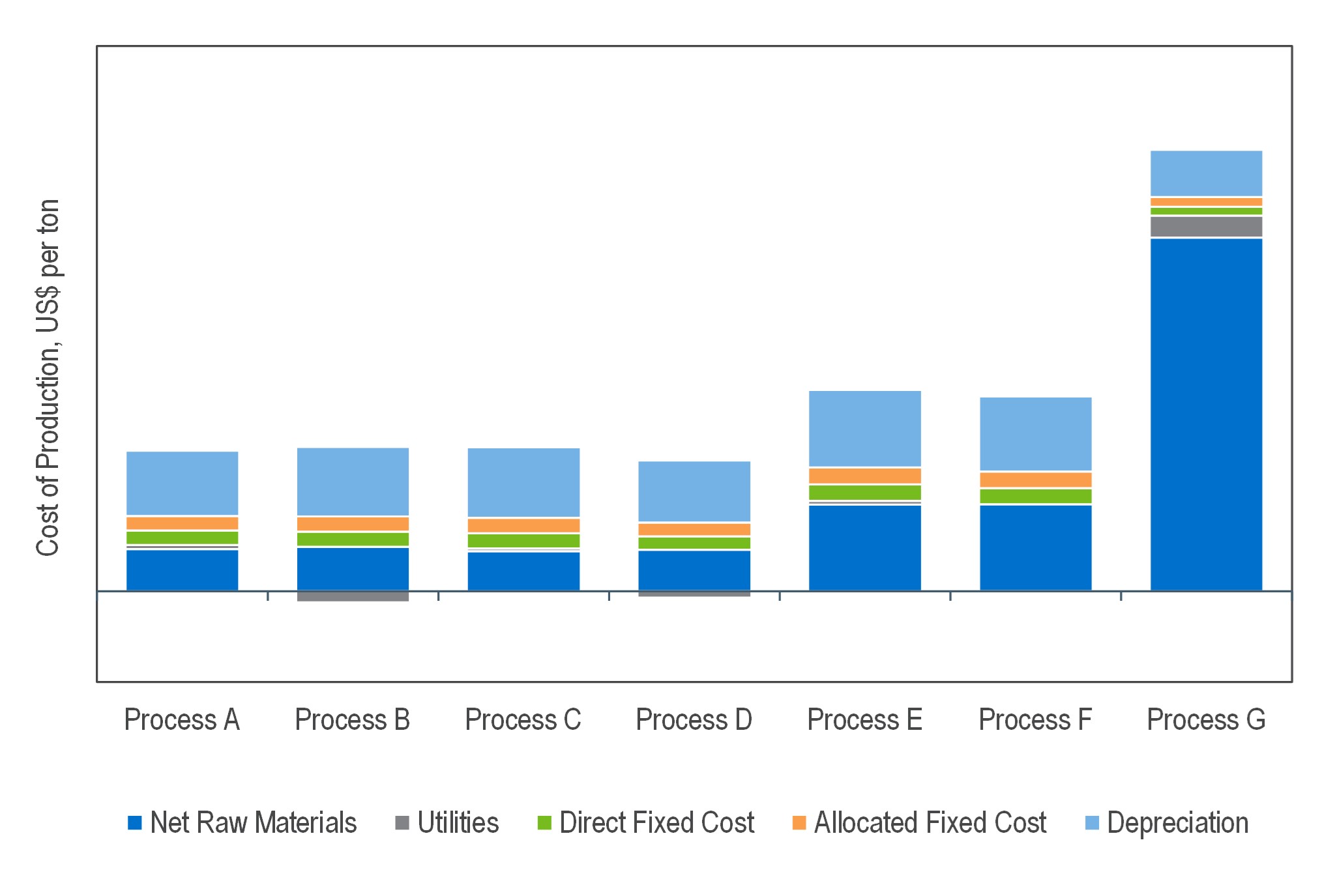News
New TECH Report - Ammonia (2024 Program)

Ammonia is one in a series of reports published as part of NexantECA’s 2024 Technoeconomics – Energy & Chemicals (TECH) program.
Overview
Commercial synthetic ammonia production started in 1913 with a 30 tons per day plant using the Haber-Bosch process. Today, a commercial ammonia plant has a typical capacity between 300 to 2 200 tons per day, with some plants as high as 3 300 tons per day, and technology licensors have proposed plants with capacities as high as 6 000 tons per day. In 2023, the total global ammonia capacity is estimated to be around 265 million tons per year – over 700 000 tons per day.
This TECH report provides an updated overview of the technological, economic, and market aspects of ammonia. The following issues are addressed in this report:
- Who are the major technology holders for ammonia production? What are some of the differences across the various technologies?
- What are the strategic and business considerations associated with entering the ammonia market?
- What are the primary end use markets for ammonia and how decarbonization efforts impacts ammonia demand?
- What are the recent technological innovations for ammonia production?
- How do the process economics compare across processes and different geographic regions?
- How does carbon intensity compare across different geographic regions, as well as its impact with the introduction of carbon tax?
Commercial Technologies
Most of the world’s ammonia output is manufactured by combining hydrogen and nitrogen over a catalyst in an exothermic reaction known as the Haber-Bosch process. Nitrogen is easily sourced directly from air, and in some processes via an air separation unit (ASU) where pure nitrogen is required. The source of hydrogen, however, is more complex and requires energy intensive processes such as steam reforming, gasification or more recently, water electrolysis.
Blue ammonia is produced similarly to grey ammonia but with carbon capture units for flue gas (reformer) and process streams, lowering its carbon emissions. Green ammonia is also discussed in this report with emphasis on the ammonia synthesis loop and how it compares economically to grey and blue ammonia.
Process Economics
Detailed cost of production estimates for various technologies are presented for USGC, China, Western Europe and Middle East locations. Estimates are developed for seven commercial routes to ammonia. Competitiveness with carbon tax is also analyzed for
Western Europe region and regional competitiveness is compared highlighting cost structure differences between the regions.
Comparison of Ammonia Production Costs
Commercial Overview
Globally, more than half of ammonia is used for urea production and over 80 percent is used in fertilizer production. Non-fertilizer, or industrial, uses of ammonia include the production of explosive grade ammonium nitrate (EGAN), synthetic fibers (nylons, acrylonitrile), isocyanates for polyurethanes, and uses in refrigeration. Ammonia is also emerging in areas such as low carbon marine fuels and hydrogen energy carrier currently being considered as an alternative to power generation and transportation, particularly in the maritime industry.
Contact a member to our Insights & Analytics team to find out more about this report
About Us - NexantECA, the Energy and Chemicals Advisory company is the leading advisor to the energy, refining, and chemical industries. Our clientele ranges from major oil and chemical companies, governments, investors, and financial institutions to regulators, development agencies, and law firms. Using a combination of business and technical expertise, with deep and broad understanding of markets, technologies and economics, NexantECA provides solutions that our clients have relied upon for over 50 years.




